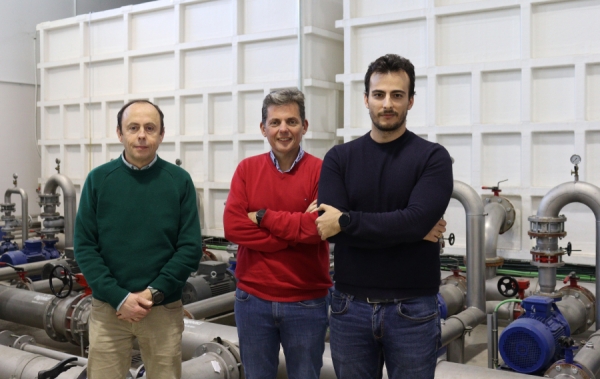Water scarcity and the high cost of energy represent the main problems for irrigation communities, which manage water for this end, making it available to agriculture. In a context of drought, with a deregulated and changing electricity market, knowing when and how much water crops are going to be irrigated with would allow those who manage them to overcome uncertainty when making decisions and, therefore, guide them towards objectives like economic savings, environmental sustainability and efficiency. For this, data science and Artificial Intelligence are important resources.
Researchers from the Hydraulics and Irrigation group with the María de Maeztu Unit of Excellence in the Agronomy Department at the University of Córdoba (DAUCO) are working to apply this cutting-edge technology to the field of precision agriculture. An example of this is the HOPE project, focused on the development of a holistic precision irrigation model that also involves the application of AI to guide decision-making. Within the framework of this effort, prediction models have been developed that would furnish irrigation communities with rigorous estimates of the amount of water that growers will need to meet their crops' needs. The latest model developed, and the most accurate to date, makes it possible to predict the actual demand for irrigation water one week ahead and with a margin of error of less than 2%, thus make possible the effective management of resources, all without detracting autonomy from its users.
According to researchers Rafael González, Emilio Camacho and Juan Antonio Rodríguez, this advance represents another step in the line of digitization applied to irrigation developed by the AGR 228 "Hydraulics and Irrigation" research group. Now they have applied the revolutionary architecture of Transformer Deep Learning to the field of precision irrigation. Since its appearance in 2017, this has been implemented in various sectors and is at the root of Artificial Intelligence milestones, such as ChatGPT. The ‘Transformer’ architecture stands out for its ability to establish long-term relationships in sequential data through what are known as 'attention mechanisms.' In the case of irrigation, this data architecture allows a lot of information to be processed simultaneously, delegating the selection and extraction of the information necessary for optimal prediction to its artificial neural network.
Daily data from the irrigation campaigns from 2015 to 2022 in the Zujar Canal's Community of Irrigators, in Don Benito (Badajoz), were used to validate the results of this model. In total, more than 1,800 water consumption measurements were used to train the model, combined with data on temperature, precipitation, solar radiation, evapotranspiration, wind speed, humidity, and crop types, etc.
This has reduced the margin of error from previous models from 20% to just 2%. Applied to integrated decision-making support systems, this can be very useful for managers of irrigation communities by offering an accurate forecast of the daily demand for irrigation water for the next seven days in contexts of water scarcity and high energy prices, but also in the framework of a commitment to sustainable resource management.
Reference: R. González Perea, E. Camacho Poyato, J.A. Rodríguez Díaz. “Attention is all water need : Multistep time series irrigation water demand forecasting in irrigation districts” Computers and Electronics in Agriculture, 218. Received on 19 October, 2023; Received in revised form on 22 December 2023; Accepted on 4 February, 2024. https://doi.org/10.1016/j.compag.2024.108723


